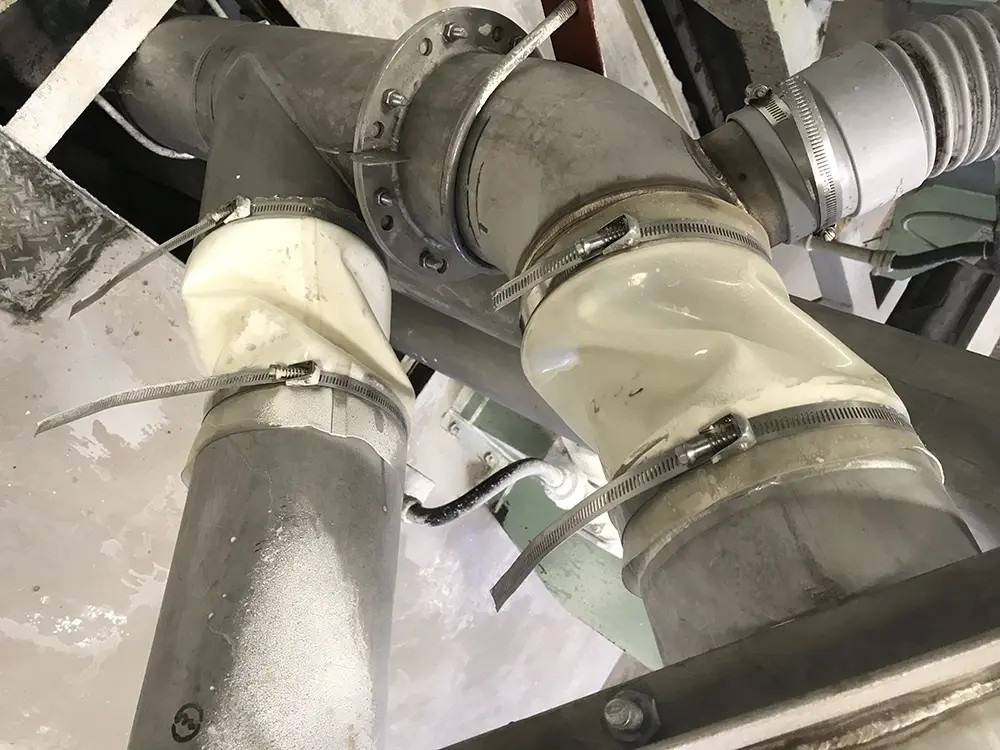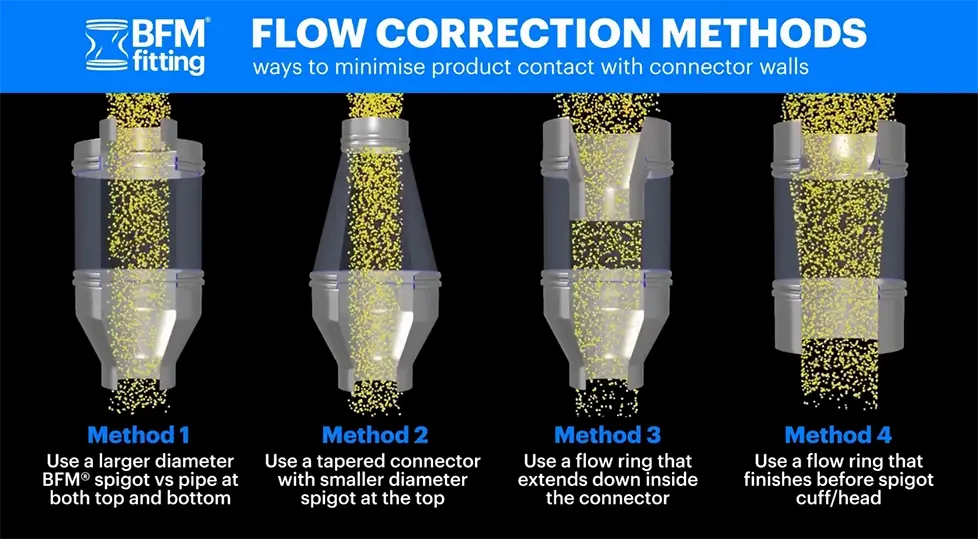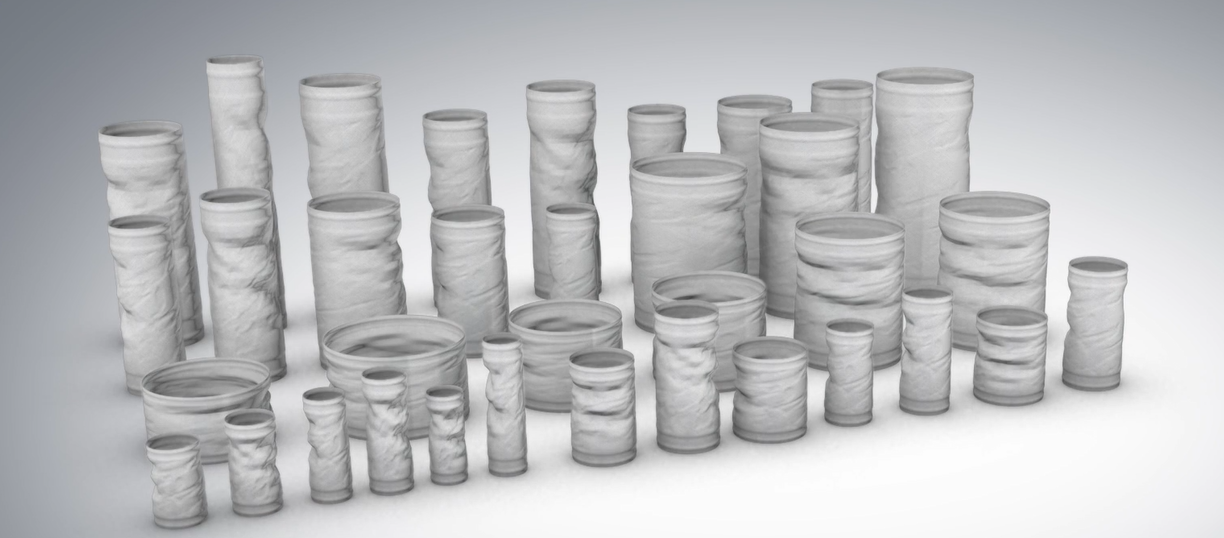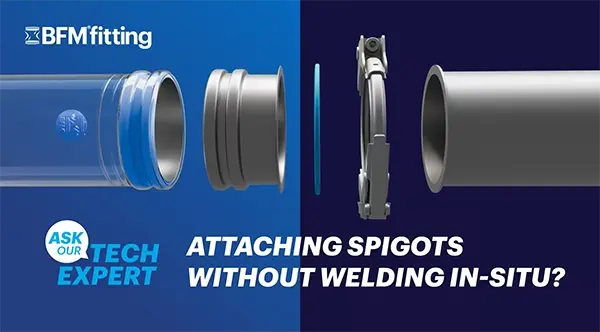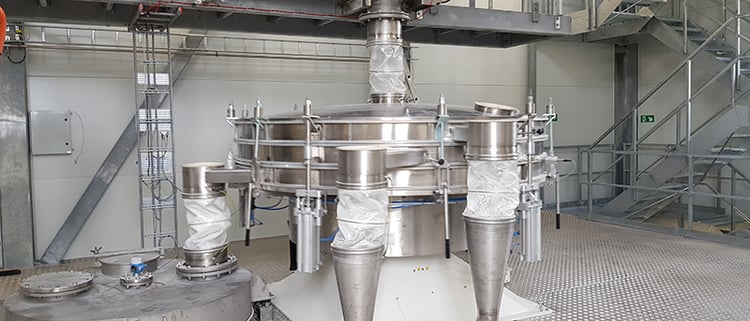
Sifters are used in a huge range of product applications throughout the industrial manufacturing world. Whilst there is a wide variation in terms of the types of sifters and the type of movement involved, one thing that all these set-ups require is flexible connections between the stationary elements and the moving sifter.
The constant movement of a sifter means that maintaining flexible connections that allow the product to flow freely whilst keeping it fully contained can be challenging.
But whether you chose the best on the market, or a basic product, there are factors that will affect the life of any flexible connector on a sifter.
Here are the Top 7 factors:
1. Positive and negative pressure on the connector
There is often a small amount of pressure in a process system to help the product exit the sifter smoothly, however, if at all possible, pneumatic pressure should be avoided in conjunction with any large oscillating movement. This is because both positive and negative pressure tends to ‘stiffen’ the connector walls which increases wear.
Positive pressure pushes the connector walls outwards increasing stress on the connector itself and increasing the chance of product effectively being ‘blown’ out into the plant through the crevice between the clamped connector and pipe.
Negative pressure (vacuum) in a system will reduce the likelihood of product leaking out into the plant through the connector joins, however, the ‘sucking’ action will tend to pull the walls of the connector inwards, causing creasing and stiffness with the potential for premature damage. If the connector is long and the vacuum is strong enough, it will also close up the aperture of the connector inhibiting product flow.
Anti-collapse or support rings can assist with reducing the effects of higher pressure on flexible connector walls in most instances.
2. Extreme operating temperatures
Very hot or very cold operating temperatures naturally place extra stress on your sifter equipment, but in particular, your flexible connections. The closer the temperature is to the connector’s operating limits, the softer or more brittle the material will become. There is a wide range of flexible connector materials available depending on the specific application or operating conditions. Ensure an appropriate connector material is selected for the intended operating temperature to avoid degradation and potential failure. Teflex Woven, for example, is a tightly woven pure Teflon connector material that can handle operating temperatures as high as 260°C / 500°F.
3. Chemical exposure
Whether it’s the product itself passing through the sifter connectors, or cleaning agents used during CIP (Clean In Place), certain chemicals can cause premature degradation of any flexible connector. It’s also important to ensure the correct concentration levels of cleaning agents used during a CIP for acid or caustic cleaning processes.
Any greater level does not provide an increased benefit in terms of cleaning the system, it is purely wasting chemicals. Excess levels will also adversely affect other parts of the system, such as seals and gaskets.
If connectors are left in place during CIP, they should always be removed after cleaning and any residue wiped off before start-up to avoid possible chemical build-up.
4. Extent of movement
The extent of movement can have a big impact on connector life. The larger the throw (movement) is in relation to the connector length the more stress it will put on the connector. The movement should be measured during operation and start-up/shutdown to account for the largest potential movement.
The maximum movement of a sifter shouldn’t exceed 20% of the total connector length to minimize these stresses.
5. Duration of operation
The longer a sifter is operating the more time it’s imparting stress on its connectors. Sifters that operate 24 hours a day are naturally going to affect their connectors faster than those that operate only 8 hours a day.
Choosing the right connector for the job is especially important to ensure you can keep your sifter running as long as you need without interruptions.
6. Abrasion from product flow
When product comes into contact with the walls of the connector during operation, it will naturally cause wear, particularly if it is an abrasive product (such as coarse sugar, aggregates, etc).
Minimizing contact with the connector walls using a flow-correction design will help increase the life of your connectors.
7. Connector length & installation gap
Probably the most important factor is having the right length connector installed for the space between the inlet/outlet feed and the sifter itself. The straighter the connector, the less wear will occur during sifter operation, provided there is the right amount of ‘slack’ to allow for the movement of the connector.
If the connector is too long for the gap, the areas where the material folds will be most prone to abrasion and eventual cracking. If the connector is installed too short, it can easily tear apart or tear off the equipment – most often this will occur at initial start-up/shut-down when movement is often greater than during normal operation.
Oscillating sifters in particular, such as Allgaier, Great Western and Rotex, have a large throw (movement) from left to right as well as up and down. This aggressive movement is especially challenging for flexible connections and ensuring the right length of the connector for the application is imperative.
Ensuring a connector is installed with the correct space to allow for the movement can be particularly difficult for clamped connectors as they have to be manually adjusted each time they are changed, giving potential for inconsistency – and subsequent performance issues.
This is one of the key reasons major manufacturers chose the BFM® fitting spigot and connector system over the traditional hose-clamped connector - once the spigots are correctly installed, the connectors are simply snap-fitted in and out in seconds – in exactly the right position every time. There is also an Installation Gap Calculator app available to help calculate the correct position to install the spigots.
Choosing the right connector for your sifter application, and having it installed correctly, is an important decision as it will help ensure efficient, clean, consistent operation and minimal downtime.
Contact one of our Authorized Distributors if you've got an issue with flexible connectors on your sifters.
